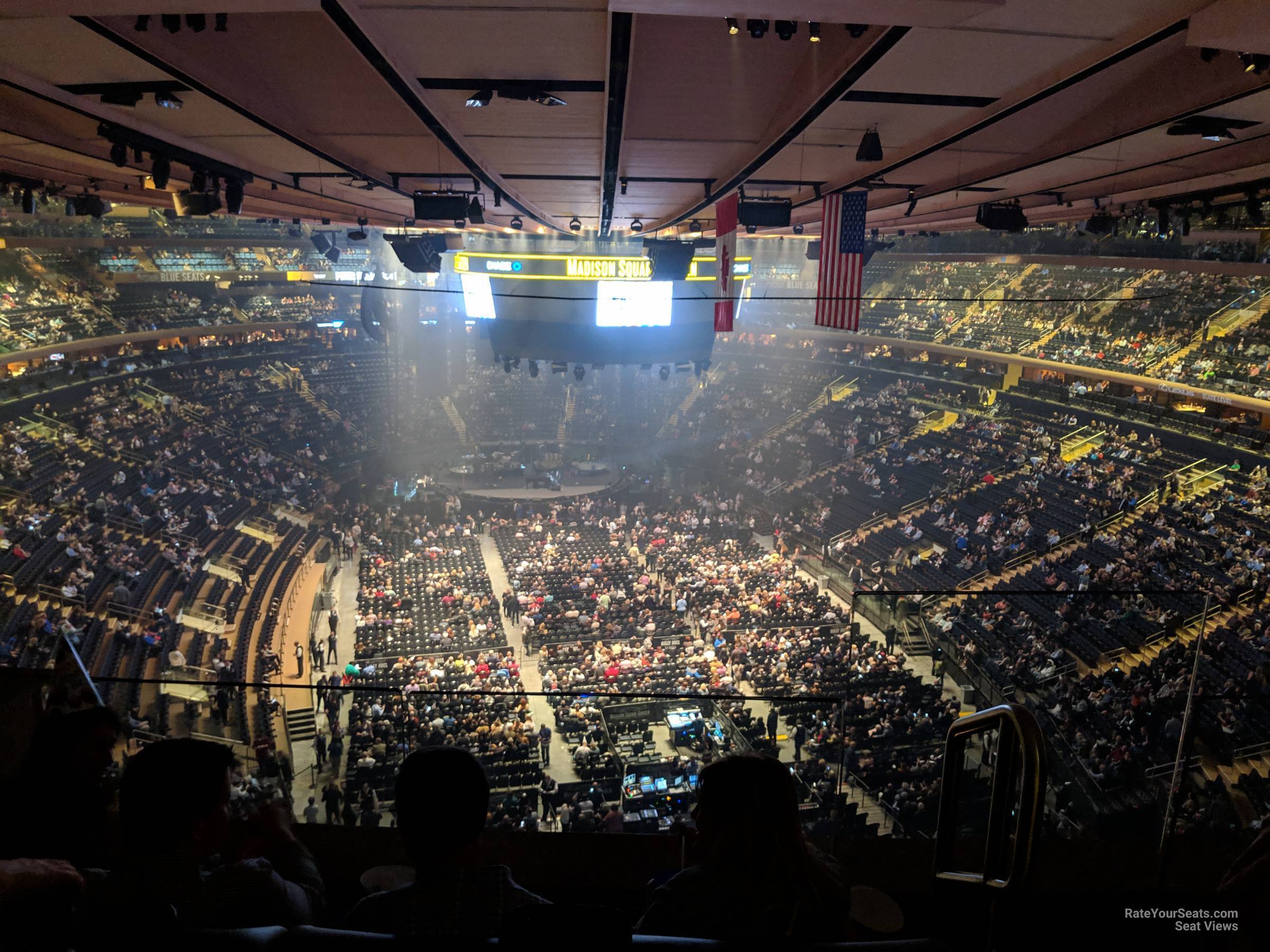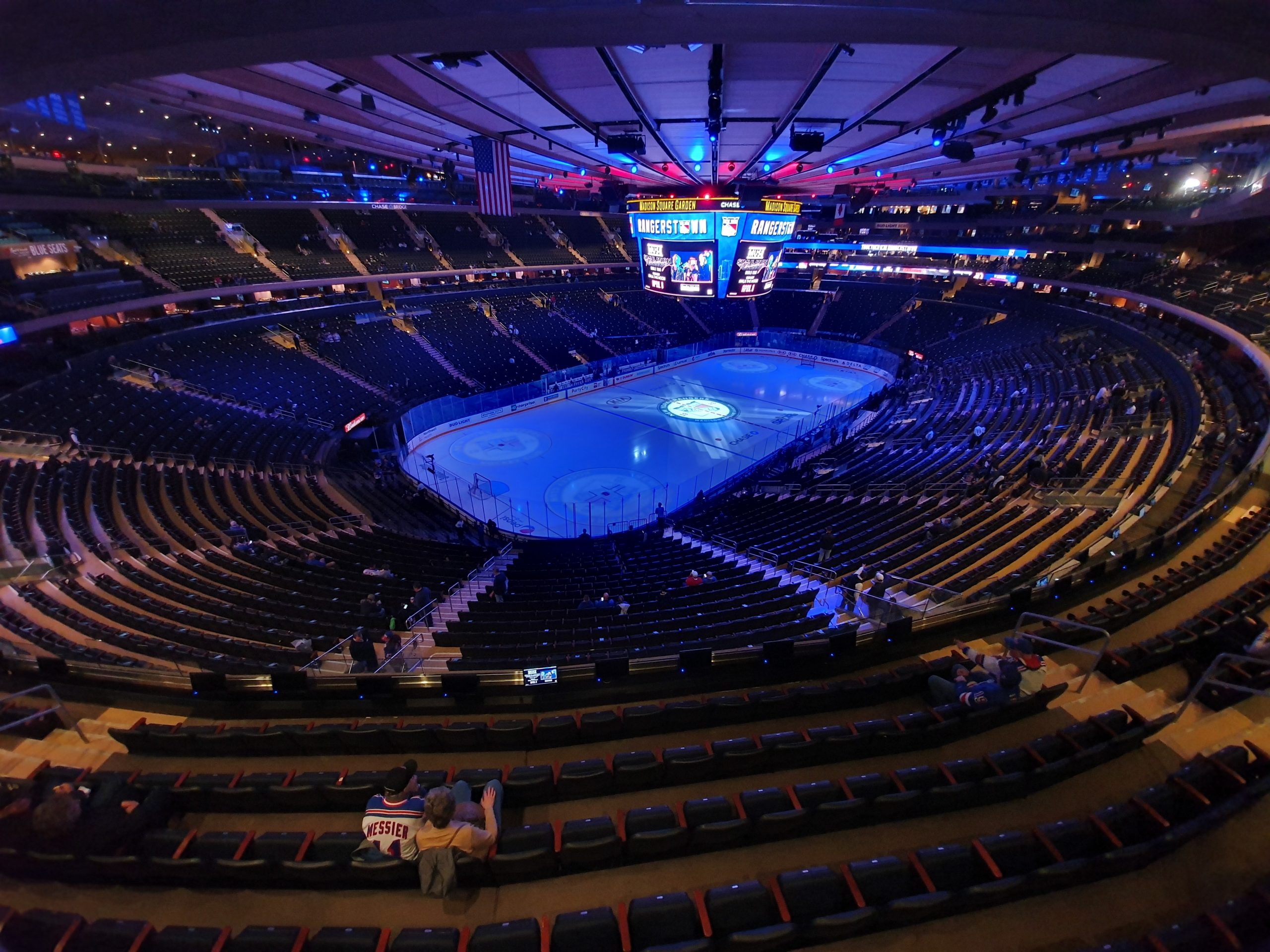Is Madison Square Garden's concert capacity a simple number, or is it a complex equation balancing history, technology, and the desires of thousands of fans? The answer, unsurprisingly, is the latter. This iconic venue, often dubbed "The World's Most Famous Arena," has served as the backdrop for some of the most legendary moments in entertainment. Understanding its seating capacity and layout is crucial whether you're a music enthusiast eager to experience a live performance or an event organizer planning a large-scale spectacle. This piece will delve into every facet of Madison Square Garden's concert capacity, providing insights and expert advice to illuminate the inner workings of this celebrated arena.
As one of the globe's most prestigious venues, Madison Square Garden has consistently raised the bar for live performances. Its rich history and incredibly versatile design have made it a favorite among artists and promoters alike. This guide aims to equip you with the knowledge needed, whether you're a fan hunting for the perfect seat or an organizer mapping out an event. From seating arrangements to effective ticketing strategies, we'll cover everything you need to know to fully experience the magic of this iconic arena.
Table of Contents
- History of Madison Square Garden
- Madison Square Garden Capacity Overview
- Seating Layout for Concerts
- Comparison with Other Major Venues
- Ticketing Process and Tips
- Enhancing Your Concert Experience
- Famous Performances at Madison Square Garden
- Technical Details and Specifications
- Challenges in Managing Capacity
- Future Plans and Upgrades
History of Madison Square Garden
Madison Square Garden, fondly referred to as MSG, boasts a history that stretches back to 1879. Over the years, the arena has undergone several significant transformations. The present iteration of the arena opened its doors in 1968. This landmark venue has hosted countless concerts, sporting events, and cultural performances, thus cementing its place in entertainment history. Its versatility is well known; Madison Square Garden can be configured to accommodate a diverse range of events, from gripping basketball games to world-class concerts. The rich history and reputation the arena holds as a premier venue make it a must-visit destination for both fans and performers alike.
- Celebrity Spotting Nyc
- %D7%92 %D7%95%D7%9F %D7%90%D7%93%D7%95%D7%90%D7%A8%D7%93 %D7%AA%D7%95%D7%9E%D7%A1 %D7%9E%D7%95%D7%99%D7%A0%D7%90%D7%94%D7%9F
- Kelly Dodd Spouse
- Myriam Cruz
- Tiny Trxie
Evolution of the Venue
The continuous evolution of Madison Square Garden clearly reflects the evolving demands of the entertainment industry. From its humble origins to its current state-of-the-art design, the arena has persistently adapted to meet the demands of modern audiences. This adaptability plays a key role in why it is a top choice for major concerts and events. Each transformation of the arena has brought about advancements, enhancing the experience for all attendees.
- First MSG (1879): Originally built as a railroad depot, it served as a versatile space in its early days.
- Second MSG (1890): A grand Beaux-Arts structure, this iteration hosted numerous high-profile events, setting a precedent for future iterations.
- Third MSG (1925): Known for its striking Art Deco design, this version also increased capacity, accommodating more events.
- Fourth MSG (1968): The current venue, renowned for its cutting-edge technology and highly flexible seating arrangements, continues to innovate.
Madison Square Garden Capacity Overview
One of the most frequently asked questions regarding Madison Square Garden concerns its seating capacity for concerts. The arena's capacity can reach up to 20,000 attendees for concerts. However, it is critical to remember that the actual number may vary based on the stage setup and the overall seating configuration utilized. This degree of flexibility permits event organizers to tailor the experience to suit the performance at hand, either fostering an intimate atmosphere or constructing a grand, spectacular event.
The seating capacity for concerts at Madison Square Garden is generally slightly lower than for sporting events. This reduction is due to the necessary allocation of space for stage construction and the placement of sound and lighting equipment. Despite this slight decrease, the overall concert experience is actually enhanced as a result. It ensures optimal visibility and also enhances the audio quality for every concertgoer.
- Grinches Kobe
- Life Below Zero Andy Bassich
- %E3%82%B8%E3%83%A5%E3%83%AA%E3%83%BC %E3%82%A4%E3%82%A8%E3%83%BC%E3%82%AC%E3%83%BC
- %E3%82%AF%E3%83%A9%E3%82%A4%E3%83%B3 %E3%82%B3%E3%83%8B%E3%83%BC
- Cris Jeopardy
Factors Affecting Capacity
Several key elements influence the seating capacity for concerts at Madison Square Garden, and understanding these factors is vital for both event organizers and attendees:
- Stage Size: A larger stage naturally demands more space, which in turn reduces the total number of available seats.
- Sound Equipment: The positioning of speakers and other audio equipment significantly impacts seating arrangements, and the placement must be carefully planned.
- General Admission vs. Seated: Concerts offering general admission typically allow for higher capacities due to the absence of fixed seating arrangements, thus allowing more fans in the venue.
- Event Type: Different types of performances inherently demand unique stage and seating configurations, thus affecting the arena's overall capacity for the event.
Seating Layout for Concerts
A comprehensive understanding of the seating layout at Madison Square Garden is a fundamental requirement for both attendees and event organizers. The arena has a diverse array of seating options, varying from premium boxes to general admission floor seats. Each individual section offers a unique perspective on the show, allowing attendees to make choices that suit both their preferences and their budget. The seating layout at MSG is strategically designed to provide optimal viewing and sound quality for every attendee, from the upper levels to the floor. Every aspect, from the acoustics to the sightlines, is carefully crafted to create an immersive experience that maximizes enjoyment.
Key Sections
Here's a breakdown of the key sections you'll find at Madison Square Garden, and what they offer:
- Floor Seats: These seats are located closest to the stage, providing an unparalleled, up-close view of the performance and are highly sought after.
- Lower Bowl: Positioned directly above the floor seats, the lower bowl offers excellent visibility and optimal sound quality for a memorable concert experience.
- Upper Bowl: This section provides a more affordable option while still ensuring good sightlines, making the concert accessible to a wider audience.
- Premium Boxes: Offering exclusive seating areas with luxurious amenities and private access, these boxes provide a premium concert experience.
Comparison with Other Major Venues
Madison Square Garden is frequently compared with other prominent concert venues that are found across the globe. While each of these venues has its own specific and unique characteristics, Madison Square Garden distinguishes itself thanks to its combination of history, technology, and overall versatility. Here's a comparison with some of its closest competitors:
- Staples Center (Los Angeles): The Staples Center, now known as Crypto.com Arena, has a similar seating capacity, but it falls short in terms of the historical significance and legacy that MSG carries.
- O2 Arena (London): The O2 Arena in London has a slightly larger capacity than MSG, though it tends to offer fewer premium seating options, which impacts the premium experience.
- United Center (Chicago): Primarily recognized for its sports events, the United Center is less versatile when it comes to hosting concerts, offering a different experience.
The capacity of Madison Square Garden to adapt to various event types and offer a premium experience in doing so truly gives it a distinct advantage in the highly competitive world of entertainment venues. This versatility has made it a favorite among performers and attendees alike.
Ticketing Process and Tips
Securing tickets for a concert at Madison Square Garden can prove to be a considerable challenge, especially for events that are in high demand. A thorough comprehension of the ticketing process combined with the use of smart strategies can significantly increase your odds of acquiring the best seats available. Here are some helpful tips to guide you through the ticketing process:
- Pre-Sales: Sign up for artist or venue pre-sales to gain early access to tickets before they're available to the general public.
- Official Channels: Always make your ticket purchases through official channels to protect yourself and avoid any potential scams.
- Secondary Markets: If official tickets have sold out, then consider reputable secondary ticketing platforms. However, always do your research.
- Flexibility: To improve your chances of securing tickets, remain open to various seating options and be willing to be flexible.
Enhancing Your Concert Experience
Attending a concert at Madison Square Garden offers an experience unlike any other. Here are a few tips to enhance your enjoyment and make the most of your visit:
- Arrive Early: Make sure to give yourself plenty of time to navigate the venue and find your seat.
- Know the Layout: Familiarize yourself with the seating chart and overall venue layout ahead of time to make your experience seamless.
- Plan for Food and Drinks: Explore the diverse range of food and beverage options available to avoid lengthy queues.
- Engage with the Atmosphere: Immerse yourself in the energetic atmosphere and connect with the crowd.
Famous Performances at Madison Square Garden
Madison Square Garden has hosted some of the most iconic and memorable performances in music history. From electrifying rock concerts to groundbreaking pop shows, the arena has been the stage for countless moments that remain etched in time. Here are a few of the most memorable highlights:
- The Rolling Stones: The 1969 concert at MSG remains one of the greatest rock performances of all time, solidifying MSGs reputation.
- Bruce Springsteen: Known for his marathon-like shows, Springsteen has played multiple sold-out concerts at the venue.
- Taylor Swift: Her "1989 World Tour" set a new attendance record for Madison Square Garden, showcasing her immense popularity.
These memorable performances not only show the arena's ability to host world-class events but also highlight its critical importance within the music industry and its impact on fans worldwide.
Technical Details and Specifications
Madison Square Garden's technical specifications are meticulously designed to provide a high-quality experience for both the performers and the audience. The arena is equipped with state-of-the-art sound and lighting systems, ensuring that every concert is a spectacle. Here are some of the key technical details:
- Acoustics: The venue utilizes advanced sound systems that deliver crystal-clear audio throughout.
- Lighting: Cutting-edge lighting technology enhances the visual impact of every performance.
- Stage Setup: The flexibility in stage configurations allows for creativity and innovation in concert design, which ensures that every show is memorable.
Challenges in Managing Capacity
Managing the seating capacity for concerts at Madison Square Garden presents several significant challenges. Successfully balancing the needs of performers, event organizers, and, above all, the attendees, requires careful planning and flawless execution. Some of the key challenges include:
- Space Constraints: Ensuring adequate space for both the seating arrangements and also for all of the stage equipment.
- Safety Regulations: Adhering to the strict safety standards that are in place while simultaneously maximizing the seating capacity of the venue.
- Logistics: Coordinating the setup and subsequent teardown of equipment in an efficient and time-conscious manner.
Despite these unique challenges, Madison Square Garden consistently delivers exceptional experiences through innovative solutions and meticulous planning that caters to every event.
Future Plans and Upgrades
Madison Square Garden is committed to maintaining its distinguished position as a world-class venue. Ongoing upgrades and strategic improvements are a central part of the venue's plan to ensure that it is up-to-date with the latest technology and innovations. Some of the future plans include:
- Technology Enhancements: Investing in the latest audio and visual technologies to elevate the overall concert experience to the next level.
- Sustainability Initiatives: Implementing eco-friendly practices to reduce the venue's environmental impact.
- Infrastructure Improvements: Upgrading various facilities to increase the comfort and overall accessibility for all attendees.
- Gentle Monster
- %D7%9E%D7%99%D7%A1%D7%98%D7%99 %D7%A8%D7%99%D7%99%D7%A0%D7%99
- Jack Elan
- El Royal
- Movierulz 2024 Kannada Movie Download


